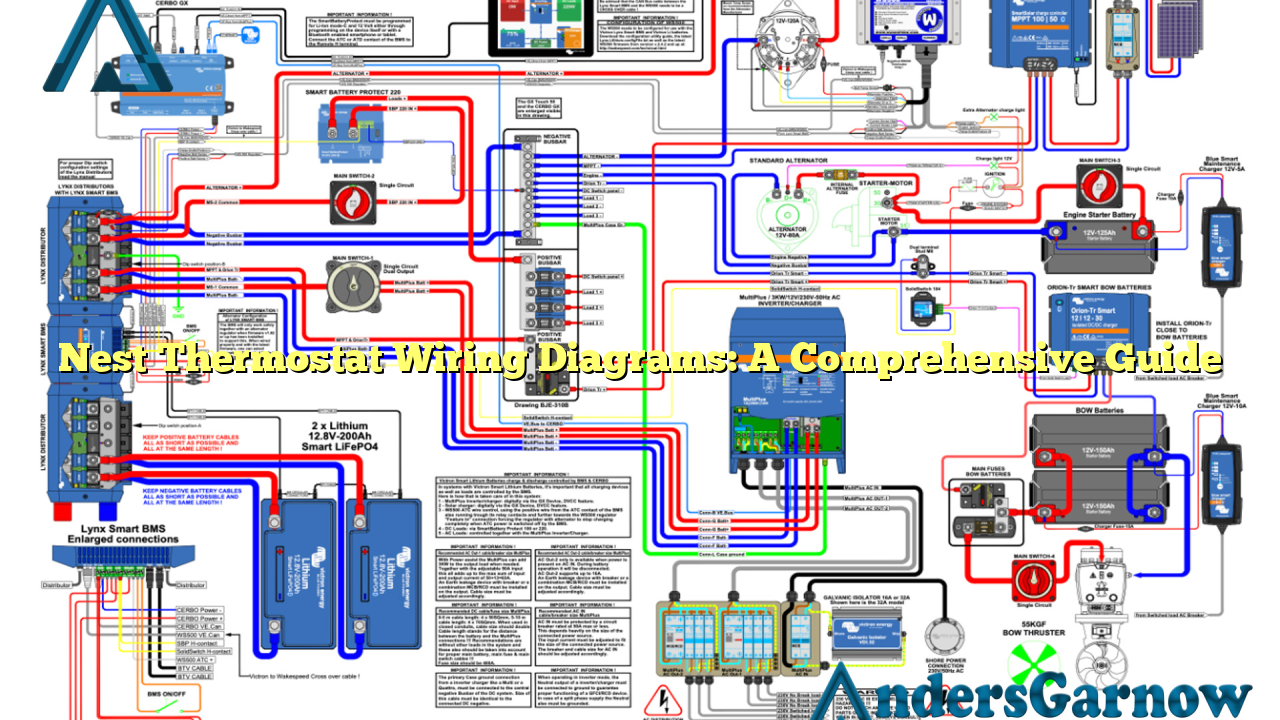Hello readers, welcome to our comprehensive guide on Nest thermostat wiring diagrams. In this article, we will provide detailed information on how to properly wire your Nest thermostat for optimal performance. Whether you are a professional electrician or a DIY enthusiast, this guide will help you understand the wiring process and troubleshoot any potential issues. So, let’s dive in and explore the world of Nest thermostat wiring diagrams!
1. Understanding the Basics
Before we delve into the wiring diagrams, it is essential to have a basic understanding of how Nest thermostats work. Nest thermostats are smart devices that allow you to control your home’s heating and cooling system remotely. They offer energy-saving features, adaptive learning capabilities, and seamless integration with other smart home devices.
When it comes to wiring, Nest thermostats typically require a 24-volt common wire (C-wire) for proper functioning. The C-wire provides a constant power supply, ensuring that your thermostat stays connected to Wi-Fi and functions smoothly. However, not all HVAC systems have a C-wire, so alternative wiring solutions may be required.
2. Standard Wiring Diagram
The standard wiring diagram for Nest thermostats consists of several labeled terminals, each serving a specific purpose. These terminals include:
| Terminal | Description |
|---|---|
| Rh/Rc | Power from HVAC system |
| W | Heating wire |
| Y | Cooling wire |
| G | Fan wire |
| C | Common wire (optional) |
To create the standard wiring connection, you will need to match the wires from your HVAC system to the corresponding terminals on the Nest thermostat. This wiring setup ensures that all essential functions, such as heating, cooling, and fan control, work correctly.
Once the wiring is complete, you can follow the Nest thermostat installation guide to configure the device and connect it to your home’s Wi-Fi network.
3. Alternative Wiring Solutions
If your HVAC system does not have a C-wire, there are alternative wiring solutions available to power your Nest thermostat. Some of the popular options include:
- Use of G-wire as a C-wire: In systems where a G-wire (fan wire) is present but not in use, it can be repurposed as a C-wire. This solution requires rewiring the fan control circuit, but it provides a reliable power source for your Nest thermostat.
- Power Extender Kit (PEK): The PEK is an additional device provided by Nest that allows you to power your thermostat without a C-wire. It connects to your HVAC system and provides the necessary power to the thermostat.
- Professional Installation: If you are uncertain about the wiring process or lack the necessary skills, it is recommended to seek professional assistance. A certified electrician or HVAC technician can help you install and wire your Nest thermostat correctly.
Before choosing an alternative wiring solution, it is crucial to check compatibility with your specific Nest thermostat model and HVAC system.
4. Pros and Cons of Nest Thermostat Wiring
Like any electrical installation, Nest thermostat wiring has its advantages and disadvantages. Let’s explore them in detail:
Pros:
- Energy Efficiency: Nest thermostats are designed to optimize energy usage, resulting in potential cost savings on your monthly utility bills.
- Smart Home Integration: Nest thermostats seamlessly integrate with other smart home devices, allowing you to control your HVAC system remotely.
- Adaptive Learning: These thermostats adapt to your preferred temperature settings and create personalized schedules, enhancing comfort and convenience.
- Easy-to-Use Interface: Nest thermostats feature user-friendly interfaces, making it simple to adjust settings and monitor your home’s temperature.
Cons:
- Compatibility Issues: Some HVAC systems may not be compatible with Nest thermostats, requiring additional wiring or professional assistance.
- Reliance on Wi-Fi: Nest thermostats heavily rely on a stable Wi-Fi connection for remote access and smart features. Network outages or connectivity issues can disrupt their functionality.
- Initial Investment: The cost of Nest thermostats and any necessary accessories, such as the PEK, may be higher compared to traditional thermostats.
5. Frequently Asked Questions (FAQ)
Here are some commonly asked questions about Nest thermostat wiring diagrams:
Q: Can I install a Nest thermostat without a C-wire?
A: Yes, it is possible to install a Nest thermostat without a C-wire by using alternative wiring solutions like the G-wire or a Power Extender Kit (PEK).
Q: How do I know if my HVAC system has a C-wire?
A: You can check your HVAC system’s wiring and consult its documentation. If you are unsure, it is advisable to seek professional assistance.
Q: Can I use the existing wiring from my old thermostat for Nest installation?
A: In most cases, the existing wiring from your old thermostat can be used for Nest installation. However, it is essential to verify compatibility and ensure proper labeling of the wires.
Q: What if I make a mistake in the wiring process?
A: If you make a mistake in the wiring process, it is crucial to turn off the power to your HVAC system and rectify the error. Incorrect wiring can lead to system malfunctions or even damage.
Conclusion
Installing and wiring a Nest thermostat requires careful consideration and adherence to the provided instructions. We hope that this comprehensive guide has provided you with the necessary information to successfully wire your Nest thermostat and enjoy its smart features. Remember, if you are uncertain or uncomfortable with the wiring process, it is always best to consult a professional electrician or HVAC technician. Stay comfortable and energy-efficient with your Nest thermostat!

